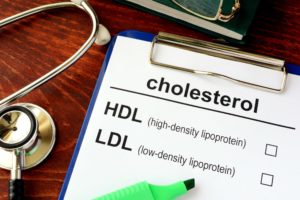 Physicians regularly recommend lowering LDL cholesterol for heart disease prevention, but a new study shows how reducing it too much can be a risk for hemorrhagic stroke. It was found that participants with LDL cholesterol levels below 70 mg/dL had a higher risk of hemorrhagic stroke.
Physicians regularly recommend lowering LDL cholesterol for heart disease prevention, but a new study shows how reducing it too much can be a risk for hemorrhagic stroke. It was found that participants with LDL cholesterol levels below 70 mg/dL had a higher risk of hemorrhagic stroke.
A Pen State-led study examined the relationship between low-density lipoprotein cholesterol (LDL) and hemorrhagic stroke over nine years. LDL cholesterol is generally known as “bad cholesterol,” and hemorrhagic stroke occurs when a blood vessel bursts in the brain.
Advertisement
Xiang Gao, director of the Nutritional Epidemiology Lab at Penn State, released a statement along with the results in Neurology, the medical journal of the American Academy of Neurology: “The results may help refine and personalize recommendations for ideal target cholesterol levels.”
According to Gao and his team, low LDL cholesterol is generally recommended as a way to reduce the risk of heart attack or ischemic stroke. But previous research had suggested a link between very low LDL cholesterol levels and hemorrhagic stroke. This is what led to the new study on optimal LDL cholesterol levels.
Expand the Scope of Knowledge
Chaoran Ma, a nutritional sciences graduate student at Penn State who was involved in the research said, “For our study, we wanted to expand the scope of knowledge in this area by investigating the issue prospectively in a large cohort with multiple LDL cholesterol measurements to capture variation over time.”
The study included 96,043 participants with no history of stroke, heart attack, or cancer when the study began. Participants were measured yearly for their cholesterol level, and their reported incidents of hemorrhagic stroke were confirmed by medical records.
The results showed that participants who had LDL cholesterol levels between 70 and 99 mg/dL had a similar risk of hemorrhagic stroke. But when cholesterol levels lowered below 70mg/dL, the risk of hemorrhagic stroke increased significantly. These findings were consistent after controlling for sex, age, blood pressure, and medication.
“Traditionally, an LDL cholesterol level of more than 100 mg/dL had been considered as optimal for the general population and lower in individuals at elevated risk of heart disease,” Gao said. “We observed that the risk of hemorrhagic stroke increased in individuals with LDL cholesterol levels below 70 mg/dL. This observation, if confirmed, has important implications for treatment targets.”
Advertisement
The findings of this study may be able to help health care professionals continue to refine guidelines of LDL cholesterol. The key to this study is noting that LDL cholesterol should be balanced. It should not be too high or too low.
“As is true with many things in nutrition, moderation and balance is key when deciding the optimal target level of LDL cholesterol,” Gao said. “You can’t go to either extreme — too high or too low. And if you’re at high risk for hemorrhagic stroke due to family history or risk factors like high blood pressure and heavy alcohol drinking, you may want to be extra careful about LDL cholesterol levels.”
Also read:
- Can your cholesterol be too low?
- What causes low cholesterol? Health risks, symptoms, and treatment of hypocholesterolemia
